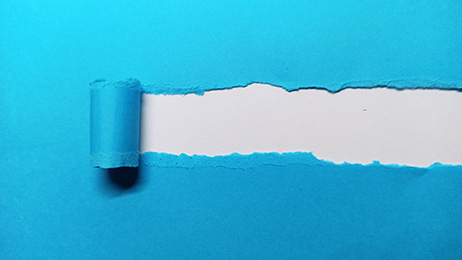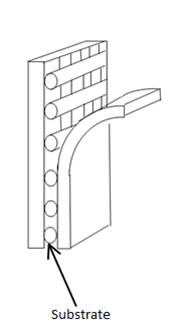 Let's take a few minutes to explain the adhesion testing methods used by Herculite Products and other industrial textile manufacturers to determine product performance and measure consistencies from one production lot to another. Understanding the basics of adhesion testing will help textile fabricators and development engineers determine which fabrics to use in their respective end applications.
Let's take a few minutes to explain the adhesion testing methods used by Herculite Products and other industrial textile manufacturers to determine product performance and measure consistencies from one production lot to another. Understanding the basics of adhesion testing will help textile fabricators and development engineers determine which fabrics to use in their respective end applications.
Adhesion testing determines the bond strength that is created between the outside layer (PVC in most cases), and the internal substrate (woven yarn) of a composite fabric. There is a common misconception that PVC “coated” fabrics cannot be tested because of the process that is used to apply the PVC to the fabric, but in fact, both coated fabrics and laminated textiles can be tested the same way and in many cases have very comparable test results.
Adhesion testing can deliver very important results depending on the application of the composite fabric. Good material bonds are especially important in applications where the fabric is going to be continuously flexed, folded, or exposed to high winds. Like all testing, it is important to compare results with other fabrics to determine the appropriate level of adhesion for your application.
ASTM D 751-06
The test method that we are going to examine is the ASTM test method that is part of the ASTM D 751-06 battery of tests. Based on my experience, most industrial fabric manufacturers are using some form of this test method.
In this test, the specimen is either 1"X 8" or 2"X 8". A wider specimen is used when the tear strength of the vinyl is less than the pounds of force needed to be dispersed over a wider range of the fabric. This prevents the PVC layer from tearing before obtaining a bond measurement. At Herculite Products, we most commonly use the 2" wide test, because it can be used on both lighter fabrics and heavier fabrics alike. In my findings it is reasonable to take 1" results and multiply them x2 to compare with another specimen that is tested in the 2" method, or alternatively take ½ of the 2" results to compare to a specimen tested to the 1" test.
The most difficult step of this test is separating the layer of PVC from the substrate. The technician has to peel the layer of PVC away from the substrate in such a way that he can clamp the film into the lower jaws of the testing equipment. A minimum of 3 inches of peeled surface layer is required by the test procedure.
In similar fashion to the tear test and tensile test, the machine applies pounds of pressure by separating the upper and lower jaws in a measured and timed fashion. The measurement is typically pounds of resistance and the timing is calibrated to be consistent in every test.
In adhesion testing, the top of the fabric specimen is attached to the upper jaws of the testing device and the loose film that has been manually separated from the substrate is attached to the lower jaws. The jaws are pulled apart with growing levels of force as to measure the point at which the film continues to peel away from the substrate. Often several tests specimens are taken from different areas of the fabric (Left, Middle, and Right). Testing can be done on both the face and reverse of the fabric. When reporting these results most companies will offer either minimum results or average results. If the film tears before it starts to peel away from the substrate or while peeling, it pulls the back layer of film through the substrate creating a hole, the results are considered "won’t strip".
Because of our commitment to quality, Herculite Products performs adhesion tests several times on every lot of fabric during production to insure that our bond strengths are consistent and within standards of the minimum requirement specified for each construction of textile.
What types of textile products are you involved with that require a measurement of adhesion and bond strength?